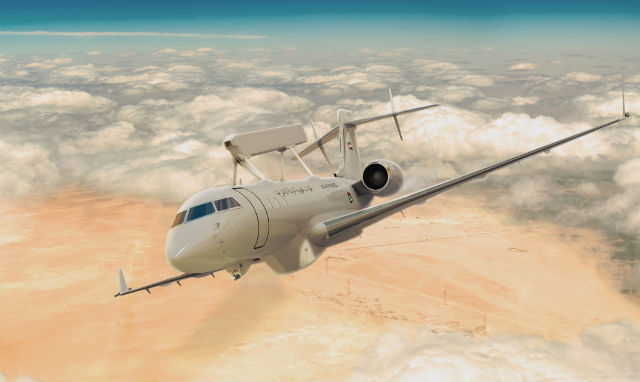Buoyed by the receipt of production contracts from Brazil for Gripen fighters and from the United Arab Emirates to supply a new-generation airborne early warning (AEW) capability, Saab ended 2015 with a record order backlog and stronger sales prospects, says chief executive Håkan Buskhe.
Detailing sales growth of 16% for 2015 – to almost SKr27.2 billion ($3.2 billion) – during a 10 February annual results conference in Stockholm, Buskhe said the company’s major business highlights included the two aircraft projects.
“After 21 years, we received in the third quarter the order [from Brazil],” he says, referring to a deal to supply the nation’s air force with 36 Gripens. “The big challenge is basically the technology transfer and the building of the two-seater,” he notes, but adds: “it looks very promising: we have met all the milestones, and received the payments.”
There are currently 53 Brazilian engineers working at Saab’s Linköping site, with 25 more to arrive in April. Deliveries of 28 single-seat fighters and eight two-seat examples are scheduled to run between 2019 and 2024.
The surprise announcement last November of a two-aircraft swing-role surveillance system deal with the UAE will lead to the delivery of adapted Bombardier Global 6000s equipped for AEW, ground and maritime surveillance duties. The project is worth around $1.27 billion.

Saab
Buskhe describes the deal as “an extremely important order”, and adds that the development has “a huge potential in other countries”. Saab reduced risk on the integration of new radar and electronic warfare systems on the Canadian-built business jet in advance of finalising the contract at the Dubai air show, he says.
Noting that Saab switched to the higher-flying and longer-endurance Global 6000 after receiving negative customer feedback about using its out-of-production Saab 2000, he says: “this is the new standard for airborne surveillance in the world. It can detect small targets from a huge distance.”
Saab achieved a book-to-bill ratio of three in 2015, and its order backlog at the end of the year totaled almost SKr114 billion, says chief financial officer Magnus Örnberg.
Buskhe attributes the Swedish manufacturer’s current success to a 2010 decision to increase research and development spending and expand its presence on the international stage at a time when many of its competitors did the opposite.
“We have just warmed up,” he says. “Our possibilities in the market place are significant. We have the best product portfolio in the world.”
Source: FlightGlobal.com



















